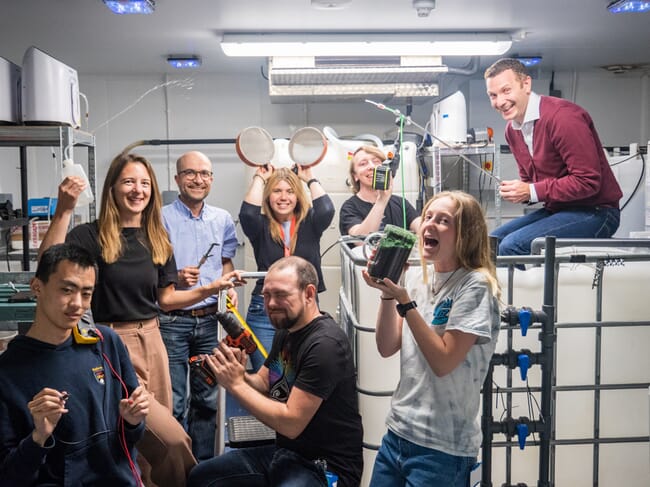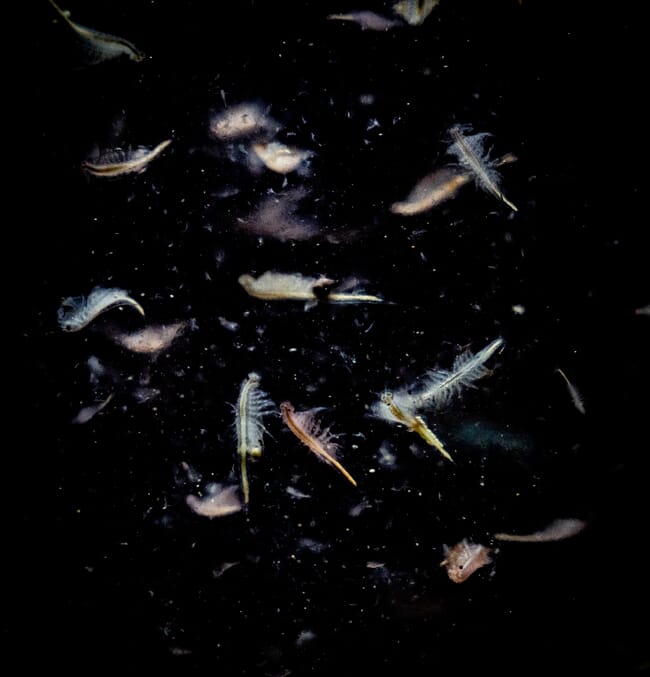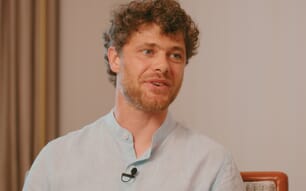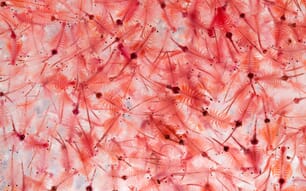
© Kieran Magee / Aquanzo
Founded by Remi Gratacap and Stefanie Lobnig, Aquanzo aims to take pressure off the marine ingredients sector and, at the same time, ensure that aquafeeds – with their ever-shrinking proportion of marine ingredients – remain as palatable and nutritious as possible.
“I realised that the biggest problem for the sustainable development of aquaculture was the scarcity of marine ingredients – it’s a flat supply and an increasing demand. That’s going to decrease performances in aquafeeds, give less access for the 9 billion people who will inhabit the planet to high quality blue food, and potentially increase pressure on ocean resources, such as the krill population,” Gratacap explains.
While he originally considered krill, due to their excellent nutritional profile and palatant properties (taste), Gratacap decided that producing a marine species that many people in the industry were familiar with – both in terms of production and utilisation – made more sense, and would also save him many years of painstaking research.

There are many benefits of farming Artemia as a feed ingredient, including being able feed them 100 percent on agricultural by-products, as well as their speedy growth and excellent nutritional profile © Kieran Magee / Aquanzo
“From a purely practical point of view I think the main reasons for choosing Artemia are: the fact that the lifecycle is completely understood – they have a genome that was completely sequenced last year, which is unheard of with zooplankton; they are very well known, so there are zero customer acceptance issues around using Artemia as a feed ingredient; and – most importantly – they can be fed 100 percent on agricultural by-products,” Gratacap explains.
Other bonuses are the speedy growth and the excellent nutritional profile of Artemia. Gratacap is currently looking at common species, but notes that several less mainstream species within the group might offer even better prospects in the long run.
They are also very hardy – with the ability to survive a wide range of temperatures and salinities and ammonia.
“This allows us to redefine the requirements of a RAS - we don’t need to be as on the dot for all parameters as people producing fish in a RAS. We will need the same level of technology but the requirements will be a lot less stringent,” he explains.
Furthermore, Gratacap notes, he is able to draw on – and benefit from – decades of research into these Artemia species. For example, he knows that they can be fed on a wide range of diets, including rice bran, or pot ale. These all produce similar levels of highly digestible protein – over 60 percent according to Gratacap. Meanwhile lipid levels range from from 10-15 percent, and the profile varies depending on the feedstock, he adds.
While Artemia contain protein levels similar to fishmeal, Gratacap doesn’t see it as a straight substitute, noting that it has some more useful properties and he sees even a low inclusion level as helping to improve current diets.
“It’s more of a palatant and functional ingredients than a substitute for fishmeal. There are plant-based products (concentrates) that have higher digestibility than fishmeal, but they are less palatable, so adding small volumes of Artemia meal can improve palatability considerably. Especially once our breeding programme has been able to produce bigger, fatter and better tasting Artemia… I think that will allow us to reduce the inclusion level even further,” he argues.
“Fishmeal is a great ingredient, but by farming marine ingredients we have the potential to make a superfood, by optimising the feedstocks and the genetics. We can tailor it for specific applications, like as a palatant attractant or for weaning or reproduction,” he adds.
A blueprint for farming Artemia
While Gratacap’s vision is certainly extraordinary, it is not entirely new. As he explains, there has been one previous large-scale Artemia farming project, in Australia, but that operated on a different basis. The main focus was on the production of microalgae for carotenoids, with Artemia – which was fed on the microalgal byproducts – as a sideline. When the company was bought up by BASF, the Artemia element was swiftly shut down.
In terms of farm design, Gratacap is taking inspiration from the model used by Innovafeed – one of the leading insect producers globally. This includes co-location with a feedstock producer, access to renewable energy sources, and access to waste heat from local industries.

Gratacap acknowledges that although Artemia contain protein levels similar to fishmeal, Aquanzo's aquafeed ingredient is more of a functional ingredient than a substitute for fishmeal © Kieran Magee / Aquanzo
He also envisages the adoption of a RAS, with a capacity of “tens of thousands of cubic metres”, alongside a processing plant and hatchery complete with a breeding programme.
In terms of scale he would like to produce tens of thousands of (wet) tonnes of biomass a year, harvesting each batch after less than two weeks.
“One of the advantages of farming marine ingredients is the consistency of the product – we feed them the same diets, we harvest them at the same age – and that consistency is very attractive to feed producers. Fishmeal is always different, depending on the location it comes from, the time of year it was harvested and whether there is an El Nino or El Nina that year,” he says.
Milestones
While it is still early days for the startup, which was only incorporated in February 2022, Gratacap is pleased to have made some solid progress, and says he’s now consistently producing several kilos of Artemia biomass each month from his lab prototype at Heriot Watt University.
“More importantly we are able to run feed trials on different species and we have preliminary results that are looking very encouraging,” he adds.
He has also managed to raise considerable funding, kicking off with an oversubscribed pre-seed, followed by a SAFE round of £1.2 million – 30 percent of which came from an Innovate UK grant with SRUC and Agri-Epi – and relates to using the Artemia to replace fishmeal in chick diets.
The next funding round – in late 2024 most likely – will be used towards building a pilot-scale production facility capable of producing “hundreds of kilos” of product, allowing them to engage with large aquafeed producers.
Meanwhile he lists three challenges.
“CAPEX, business model and scale. In terms of the first two we’re currently working on a business model to help reduce our own CAPEX in building the facilities. For the scaling we will draw on the experience of our own engineers, who have been through the establishment of RAS facilities,” he explains.
Industry reaction
According to Gratacap early feedback has been very positive – from NGOs, to IFFO, to farmers and feed producers.
“We are doing what Veramaris and Corbion are doing on the oil side, on the protein side, which is why it’s very exciting. It’s a sustainably produced marine ingredient with zero ocean impact,” he concludes.




